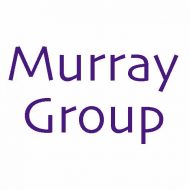S.J. Lawson, K.K. Murray, A mixed liquid matrix for infrared matrix-assisted laser desorption/ionization of oligonucleotides, Rapid Commun. Mass Spectrom.16 (2002) 1248–1250. doi:10.1002/rcm.698.
Abstract
The use of glycerol as a matrix for oligonucleotide and DNA ionization by infrared matrix-assisted laser desorption/ionization (MALDI) has been the subject of much interest in recent years. Under the proper conditions, double-stranded DNA in excess of 2000 bases in length can be ionized using lasers operating in the 3 µm wavelength region of the mid-IR. However, glycerol can be a difficult matrix to use because the sample can be rapidly depleted and because the quality of the mass spectra obtained is often sensitive to the sample preparation method. The goal of the work described below is to improve the performance of IR MALDI with a glycerol matrix by mixing the glycerol with a solvent that does not absorb the mid-IR laser radiation. In this way, the deposited energy can be varied by changing the energy absorber concentration. The solvent dimethyl sulfoxide (DMSO, (CH3)2SO, also known as methyl sulfoxide) was chosen because it is miscible with water and glycerol and is a useful solvent for oligonucleotides. Since DMSO contains no NH or OH bonds, the IR absorption near 3 µm is low compared to glycerol.8 Mass spectra of oligonucleotides were obtained from frozen mixed matrices consisting of a glycerol energy absorber and DMSO solvent. These mixed matrices are simple to handle when frozen and also have the potential for use with continuous flow IR-MALDI.
